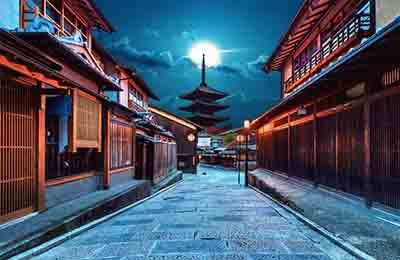建立古镇博物馆刍议
时间:2022-09-16 01:31:10

每次出席“两会”,都如沐春风。今年的“两会”尤其这样。
今年政协会议上,我提出了一个关于在重要古村镇抓紧建立小型博物馆的提案。在这里我先讲讲这个提案的主要思路。
我国历史悠久,民族众多,自然气候不同,文化板块多样,形成了千姿百态、风情各异的古村镇。古村镇是中华大地上最大的文化遗产。中华文化的多样性在古村镇中,非物质文化遗产在古村镇中,少数民族的文化遗产绝大部分在古村镇中;中华民族文化的根也深深存在于古村镇中。但是在现代化和城市化的冲击中,古村镇消失很快。一方面,是以建筑为主体的整体上的瓦解,一方面是村镇内部的历史文化遗存的大量流失。有些村镇虽然表面看风格犹存,但实际上内部遗存残存无多,已成文化的空巢。
古村镇的保护,一方面是古老的村容镇貌,一方面是它的内涵。否则这些古村镇即使保留下来,已是徒具形骸,内涵空洞,记忆真空。当务之急是在这些重要的古村镇建立博物馆。具体建议如下:
一、古村镇博物馆的布局由政府文化部门主导,专家制定。可以是国家一级,也可以是省一级来规划。
二、不要搞劳民伤财的大型博物馆,宜小型和富于实效。条件较差的贫困地区,以抢救性收集为主,收集内容包括特色家具、古代农具、历史文献、文化器物以及其他各类文化遗存。继而进行整理、分类、陈列。
三、古村镇博物馆应是百花齐放、各具特色、多样化的。避免搞简单化统一格式的村史博物馆或民俗博物馆。要突出地域特色,也可重点突出某一种当地富有的非物质文化遗产。
四、博物馆的方案要请相关专家学者来帮助与策划,以使博物馆真正具有历史记忆和文化积淀的价值,并富于科学性和深度。
五、小型博物馆用钱不多,但于文化保护意义深远。经费来源应是多方面的。包括地方财政、企业赞助、旅游建设经费等。个人收藏家热心建立博物馆也应大力支持。可以是民办公助,也可以是公办民助,也可以是民间捐赠性的,也可以是私人性质的,愈灵活愈好,以利尽快将古村镇博物馆在全国全面铺开。
六、要明令禁止古董贩子到古村镇“淘宝”,杜绝遗存的流失,把千百年的文化成果留在本地。同时,向村镇百姓普及文化遗产知识,保护好古村镇的文化整体。
七、古村镇的博物馆建成后,在文化上可成为新农村文化建设不可或缺的重要成果;在经济上,可成为旅游设施,增加收入。
古村镇面临的破坏是严重的、多方面的。保护是紧迫、艰巨和不能回避的。小型和多样的博物馆是保护古村镇遗产的重要方式。在新农村建设中,博物馆的建立还是先进文化不可或缺的内容,而且在旅游开发中,又是促使外地游人认识古村镇必备的设施。因之希望政府文化部门能确认和启动这攸关中华遗产存亡的文化举措。
Setting Up Museums to Protect Ancient Village Cultures
By Feng Jicai
Editor: Feng Jicai is a Tianjin-based writer and an enthusiast for preserving ancient cultural sites across the country. The following is an edited version of some thoughts behind his proposal presented to the annual session of the CPPCC held in Beijing in March, 2007.
China, a multiethnic country with a long history and different cultural traditions, has numerous ancient villages and towns, which constitute the largest cultural legacy of the country. These ancient villages and towns are where the diversity of the Chinese culture, intangible cultural heritage, and ethnic cultures gravitate. In other words, the Chinese culture is rooted in these villages and towns across the country. However, as modernization and urbanization are spreading across the country, ancient villages and towns are vanishing. Two factors contribute to their disappearance: firstly, age-old villages are disintegrating as a whole, and secondly, the cultural heritages within villages and towns are draining away. Though some villages and towns still look ancient, their cultural contents are no longer there. In fact, some villages and towns are empty of their ancient cultures.
The protection of ancient villages and towns calls for preservation of both appearance and cultural content.
It is desirable to take the following concrete steps to protect ancient villages and towns across the country:
1) The cultural authorities of the government should play a leading role in planning the setup strategies of museums of ancient villages and towns. Experts participate. The strategy can be national or provincial.
2) Large-scale museums would be a waste of energy and money. Small museums in different styles should be emphasized to ensure effective protection. In poverty-stricken areas, the emphasis should be on salvaging cultural heritages such as ancient furniture, farming tools, historical documents, cultural items and other cultural remains.
3) Diversity is a key word for the planning of small museums. Avoid turning all these museums into the uniformity of village histories or folk lifestyles. Regional features such as intangible cultural heritages should be emphasized.
4) Experts should be consulted in formulating plans for these museums to ensure that historical memories and cultural values are scientifically preserved for in-depth studies.
5) Funds should come from various sources: local governments, businesses and tourism. Private collectors should be encouraged to set up their museums. Subsidies from local governments, contributions from private sectors and donators are welcome.
6) Antique dealers should be banned from searching and buying out cultural heritages from ancient villages and towns so as to make the age-old things stay where they are. Governments at different levels should promote awareness among villagers for better preservation of overall cultural heritages.
7) Once built, these museums can be part of the campaign of promoting the cultural development in the new countryside. They may also contribute as a source to local income.
Since the destructive situation facing the ancient villages and towns is serious and multiple, protection is urgent, unavoidable, and arduous. Small museums in various styles are a key way to protect the cultural heritage of ancient villages and towns. They will also play an indispensable part in the building of the advanced culture in rural areas. In the development of tourism, they will also be important facilities to help visitors become aware of the importance of ancient villages and towns.It is imperative that government cultural authorities acknowledge and implement this measure which bears on the fate of the Chinese cultural heritage.
(Translated by David)
